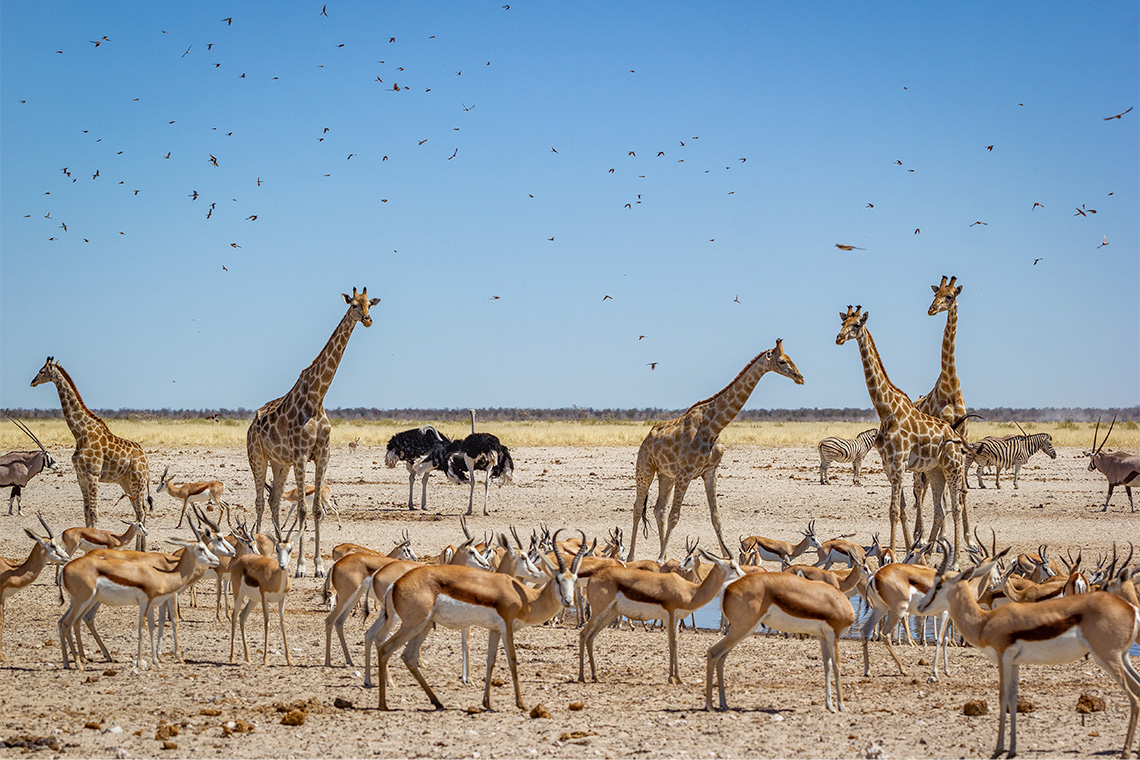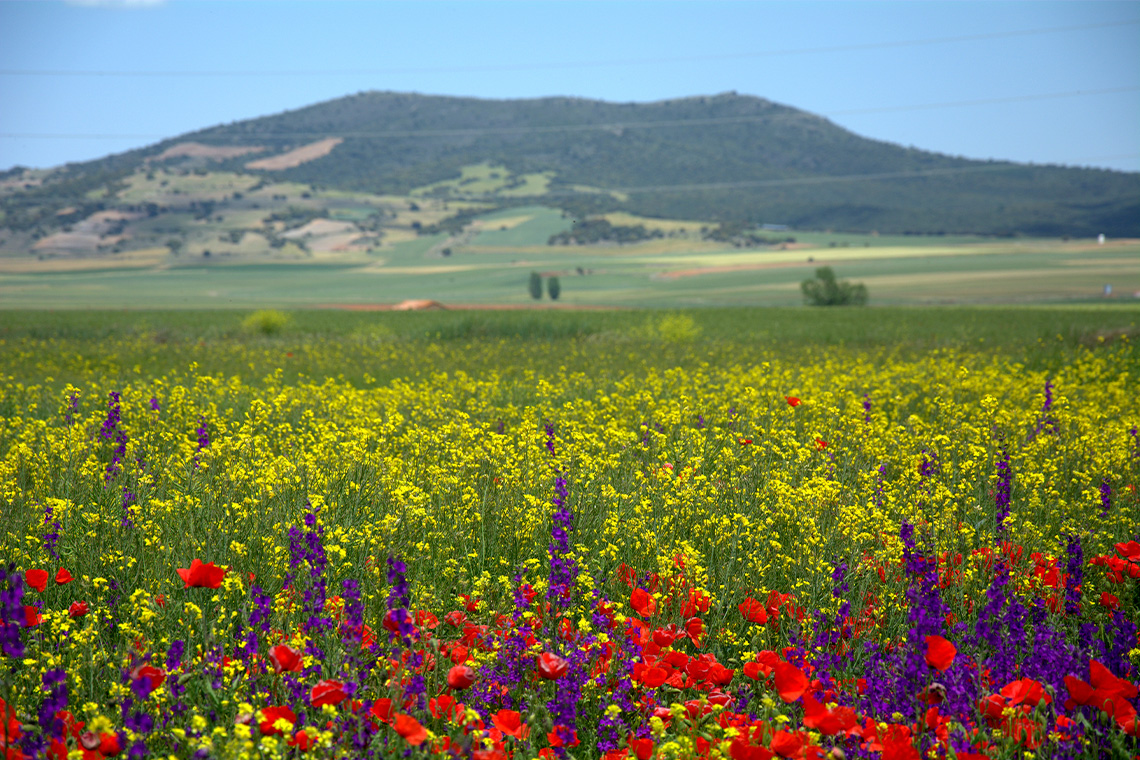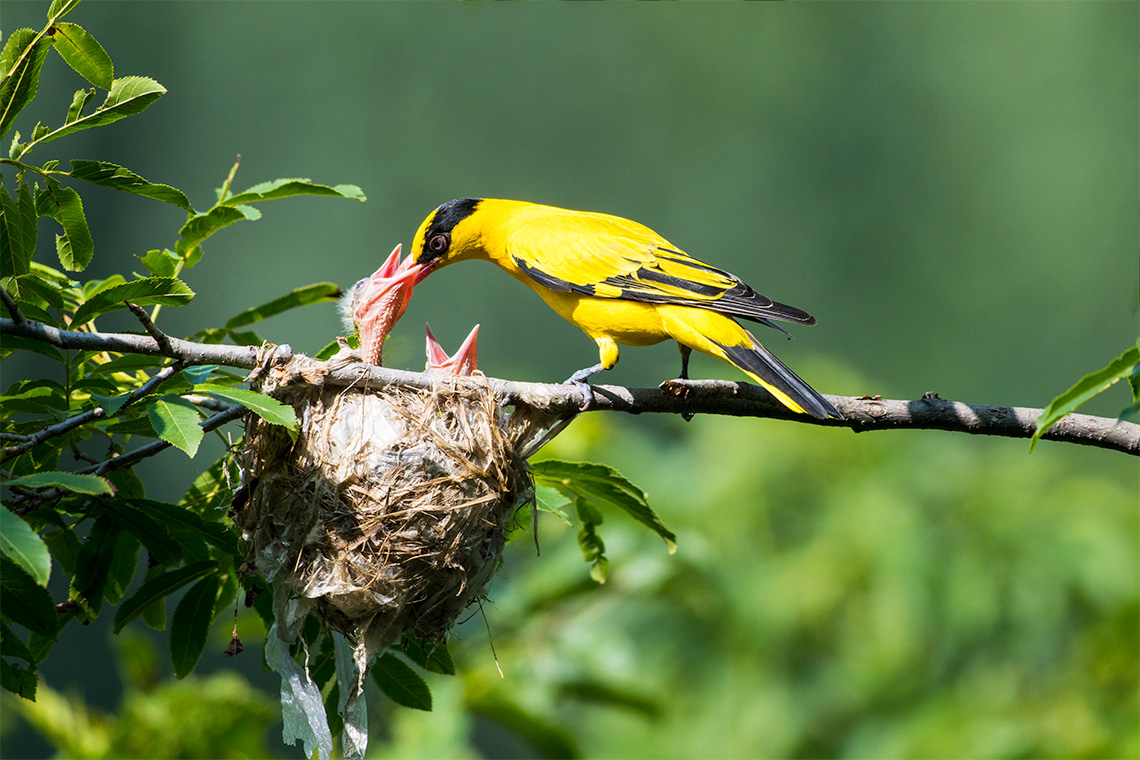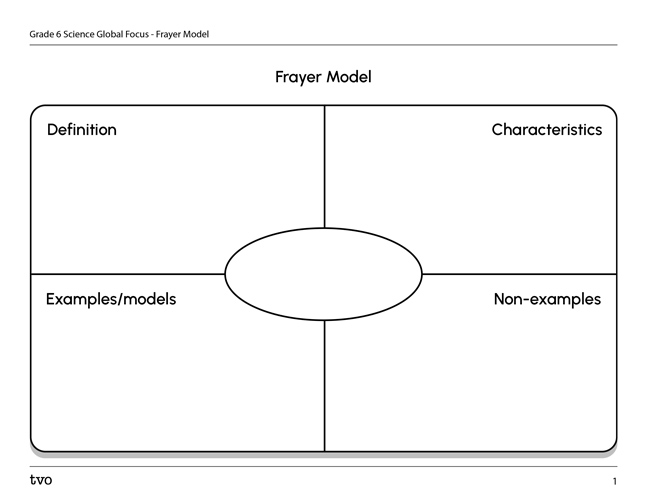Minds On
What is biodiversity?

According to the World Wildlife Fund (WWF), “Biodiversity is all the different kinds of life you’ll find in one area — the variety of animals, plants, fungi, and even microorganisms like bacteria that make up our natural world. Each of these species and organisms work together in ecosystems, like an intricate web, to maintain balance and support life. Biodiversity supports everything in nature that we need to survive: food, clean water, medicine, and shelter.” (Hancock, n.d.)
Examine the following carousel of images and captions to learn more about the term biodiversity and what it means.
Try It
What is biodiversity?
Build your understanding by completing the Frayer Model for the concept of biodiversity as follows:
- Include the word biodiversity in the centre of the Frayer Model organizer.
- Using your own words, list the definition of biodiversity in the appropriate section.
- In the characteristics section, include some facts about biodiversity and/or how you would describe it. What are some of the characteristics of biodiversity?
- Lastly, list some examples and non-examples of biodiversity. What is it and what is it not?
Complete the Frayer Model in your notebook or using the following fillable and printable document. If you would like, you can use speech-to-text or audio recording tools to record your thoughts.
Action
Global connection
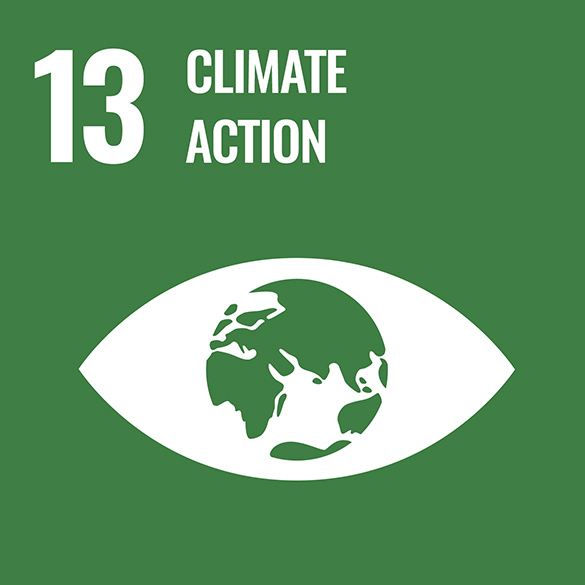
The United Nations (UN) is a group of many countries from around the world that have come together to create a better future for people and the environment. They have created 17 goals called the Sustainable Development Goals.
This learning activity is connected to Goal #13: Climate Action. This means everyone should help reduce climate change and its impact. Storms, disasters, and lack of food and water are made worse by climate change.
The impacts of climate change on living things.
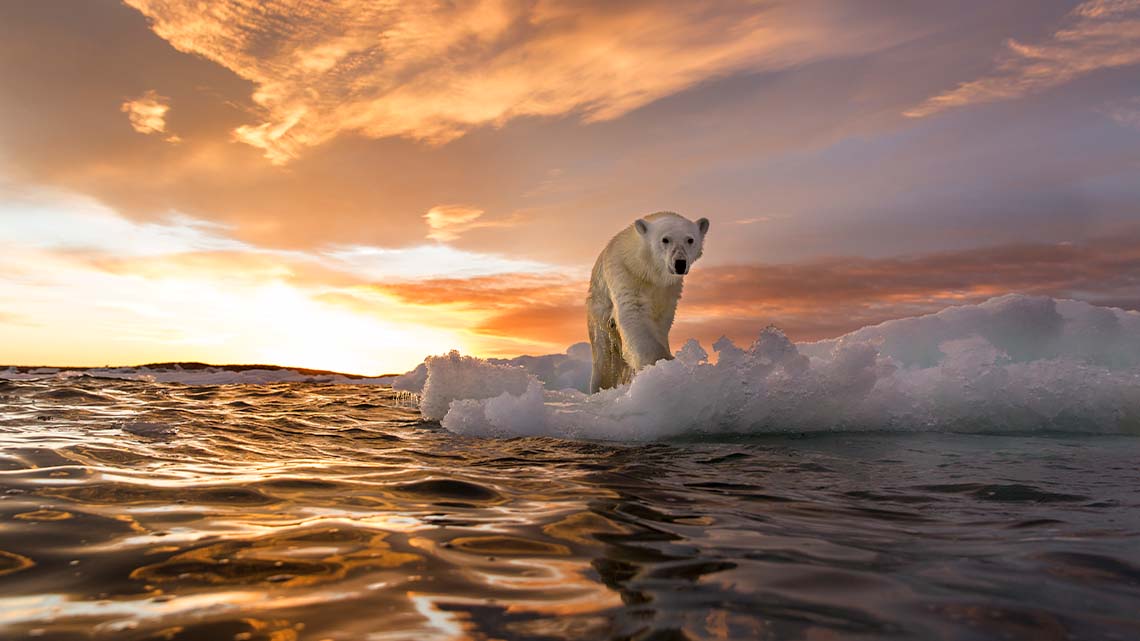
The climate on our planet undergoes natural long-term cycles of change, but it is now well documented that, largely due to human activity, these natural changes are happening at a rate much faster than ever before, and faster than many life systems on Earth can keep up or adapt to. This is what we often refer to as climate change.
Scientists, environmentalists and citizens alike know that climate change is impacting many living organisms around the world and threatening their survival and existence. Many species of living organisms have gone extinct, and many others are at risk of the same fate.
Brainstorm
Brainstorm
What impact does the loss, or severe decline, of one species do to overall life on our planet?
Record your ideas using a method of your choice, such as in print, digitally or using an audio recording. If possible, share your thinking with a partner.
Let’s begin by examining the definition of the term biodiversity.
What is biodiversity?
There are many different forms of life that exist on planet Earth. We call this biodiversity.
The term ‘bio’ refers to living things and ‘diversity’, in this instance, means variety or many differences. When we put the two terms together, biodiversity refers to the many different forms of life on our planet, the varied and unique habitats and ecosystems, and how it is all connected, either directly or indirectly.
The definition of the term biodiversity references the interconnectedness of living organisms on our planet. So, an impact on one species will inevitably have an impact on others.
Let’s explore a specific example that the impacts of climate change are having on one species and the trickle-down effect on other living things sharing the same community.
Check out this video entitled “Climate Watch Shorts: The Changing Hunt” to learn more about the impact of climate change on wolves and other species they are connected with.
While wolves seem to be adapting to the effects of climate change so far, the shifting hunting grounds of the wolves, and their inability to cross over once-frozen waterways, will impact the food webs in the areas where they once used to live.
With the wolves gone from a region of the forest, what might happen to the other living things left behind?
Try the following flowchart activity to explore a simplified example of what might happen if wolves were not able to return to a section of the forest.
Revisit your notes from the brainstorm question: “What impact does the loss, or severe decline, of one species do to overall life on our planet?”
Is there any new thinking or ideas you’d like to add to your notes?
The impact of biodiversity on human life
When we think about the human connection with plants and animals, we tend to think about our need for these living things for food. Many people are not aware just how dependent humans are on other living things for many of the products and materials that we use in everyday life. Let’s begin our investigation with a forest habitat and try and identify the many different products that come from this diverse community of organisms.
Explore this video clip from the episode of Finding Stuff Out with Zoey entitled “Into the Woods” to learn more about what products originate from the forest.
Let’s examine some more products that humans use that originate from the world’s biodiversity.
Pause and Reflect
Pause and reflect
Using a method of your choice, record your thinking for the following questions:
- Do you know any other items that are made from the diverse living organisms of our planet?
- Why is it important to know what the products we use are made from?
While many countries try and put laws into effect to not allow the use of species at risk in the creation or manufacturing of their products, not all countries do this. With the ability to purchase goods and materials online, it is now more than ever, incredibly important to think critically about the products that we purchase and use to ensure that they are not only sustainable, but don’t put the biodiversity of the planet at further risk.
How do we help?
Explore this video entitled “Climate Watch Shorts: Wildlife Rescue” to learn more about what some individuals are doing to help the animals in Ontario to survive in a changing climate.
While we can’t all be conservation scientists and help preserve biodiversity or end climate change on a large scale, we can all try and contribute small actions to protect our planet.
Examine the following list of actions everyday citizens can take in their lives to help preserve biodiversity:
- support local growers/farmers or try and grow some of your own food
- plant native plants, especially pollinator-friendly ones to help our bee populations
- use less water during your day to help conserve freshwater resources
- be aware and respectful of habitats and try to just observe and not disturb them
- be curious about the products and materials you use and consider the impacts to biodiversity of their creation or use
Can you think of any other actions not listed? Remember, small actions taken by many can have a large impact in the long term.
Try It
A plan to help
Using the format of your choice, make a plan or a personal pledge with the actions you will try and take in your personal life to help reduce the impacts of climate change and protect your local biodiversity. What little, everyday actions can you take to help? Why is it important to do this?
Discuss your plan with a trusted adult before putting any of your actions into effect.
To help guide your thinking, you may choose to complete the My Plan to Help Chart in your notebook or using the following fillable and printable document. If you would like, you can use speech-to-text or audio recording tools to record your thoughts.
|
Climate change issue: |
||
|
How it affects biodiversity |
Questions I want to research |
Actions we can take |
Press the ‘Activity’ button to access My Plan to Help Chart.
Consolidation
The future of climate change

A person thinking about two different trees, one with leaves surrounded by lush green grass and flowers and then another tree without leaves surrounded by dry cracked ground.
How would the loss of biodiversity because of climate change directly impact you? Using the format of your choice, answer the following two questions using as much detail as possible.
- What would life be like in a future where climate change is significantly improving?
- What would life be like in a future where climate change is getting much worse?
In both answers, include information to describe daily life and your environment/surroundings. What has changed? How is it affecting you? Use as much description as possible to communicate your thinking. If you would like, you may also include a visual representation to go along with your answers.
When finished, if possible, share your thinking with a partner and compare your answers.
Reflection
As you read through these descriptions, which sentence best describes how you are feeling about your understanding of this learning activity? Press the button that is beside this sentence.
I feel…
Now, record your ideas using a voice recorder, speech-to-text, or writing tool.
